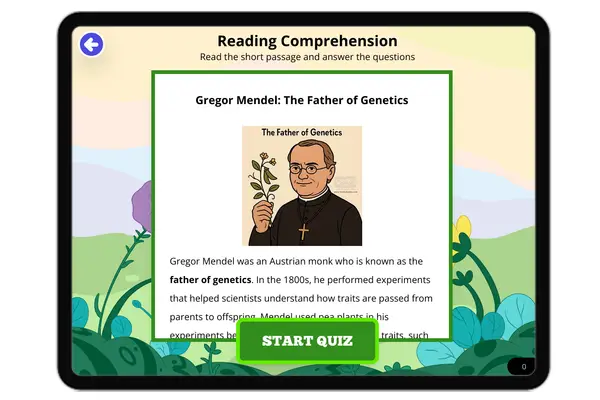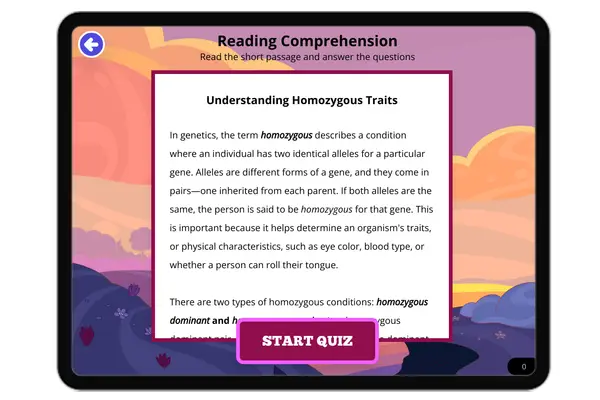Heterozygous vs. Homozygous: What’s the Difference? — Reading Comprehension
Grades
- 5
- 6
- 7
- 8
Standards
- MS-LS3-1
- MS-LS3-2
PRINT+DIGITAL RESOURCE
This learning resource is available in interactive and printable formats. The interactive worksheet can be played online and assigned to students. The Printable PDF version can be downloaded and printed for completion by hand.
About This Reader
This NGSS-aligned middle school passage explains the difference between heterozygous and homozygous allele combinations. Students will learn that homozygous individuals have two identical alleles, while heterozygous individuals have two different ones. The passage uses clear examples (like BB, bb, and Bb) and explains how dominant and recessive alleles interact. It also introduces Punnett squares to predict inheritance patterns and discusses real-world applications in medicine and agriculture. Key terms like dominant, recessive, genotype, and heredity are clearly defined. This passage supports reading comprehension and meets NGSS standard MS-LS3-1 (Heredity: Inheritance and Variation of Traits).
Perfect For:
👩🏫 Teachers
- • Reading comprehension practice
- • Auto-graded assessments
- • Literacy skill development
👨👩👧👦 Parents
- • Reading practice at home
- • Comprehension improvement
- • Educational reading time
🏠 Homeschoolers
- • Reading curriculum support
- • Independent reading practice
- • Progress monitoring
Reading Features:
📖
Reading Passage
Engaging fiction or nonfiction text
❓
Comprehension Quiz
Auto-graded questions
📊
Instant Feedback
Immediate results and scoring
📄
Printable Version
Download for offline reading
🔊
Read Aloud
Voice-over with word highlighting





















